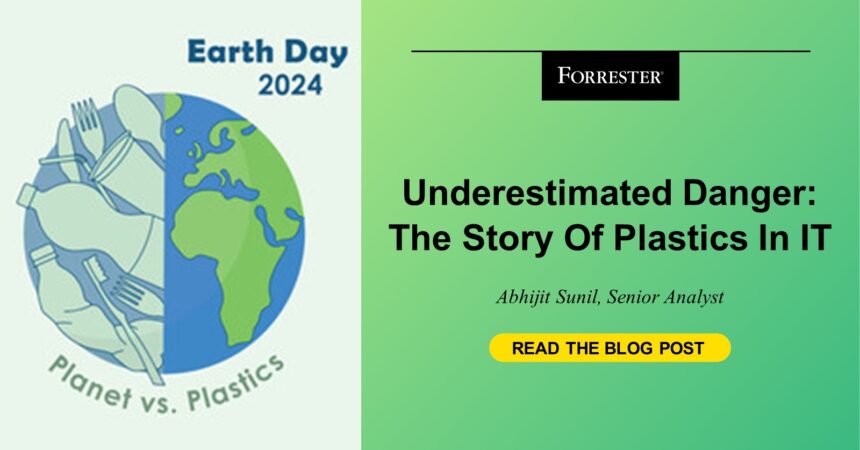Plastics play a crucial role in modern society, appearing in everything from toys to cars, medical equipment, spacecrafts, and computers. They are the technological equivalent of steel and concrete, with sustainability implications that far surpass their usage.
In 2022, a staggering 62 million tons of e-waste were generated, with an 82% increase from 2010. Twenty-seven percent (17 million tons) were plastics. Unfortunately, only 22% of small IT and telecommunication equipment, which includes laptops, mobile phones, GPS devices, and routers, are recycled, and this will only get worse, since the recycling rate is projected to decline from 22.3% in 2022 to 20% by 2030.
Interestingly, recycling is often more easily understood and a very visible internal sustainability endeavor, as opposed to others such as reducing supply chain emissions. It’s no surprise, then, that plastic recycling efforts were second on the list of sustainability programs offered by employers in Forrester’s Workforce Survey, 2023.
Thankfully, technology vendors are stepping up. Cisco stated that 27% of new products and packaging designs released in fiscal-year 2023 substantially incorporated circular design principles. Since 2014, Dell has been able to take back 100 million pounds of plastic from used electronics to make new products, and that plastic today sits in 125 Dell products.
Various global legislative frameworks are also helping, such as California’s Right to Repair Act, SB-244, that goes into effect on July 1, 2024. Companies such as Apple supported the bill.
There is no doubt that effective solutions will require comprehensive changes across the IT lifecycle from multiple actors: adopting more sustainable production methods, advancing recycling technologies, implementing stricter regulations, and enhancing global cooperation on environmental policies.
As Earth Day 2024 brings attention to this growing problem of planet versus plastics, schedule time with me to discuss IT sustainability and the implications on the IT lifecycle.








